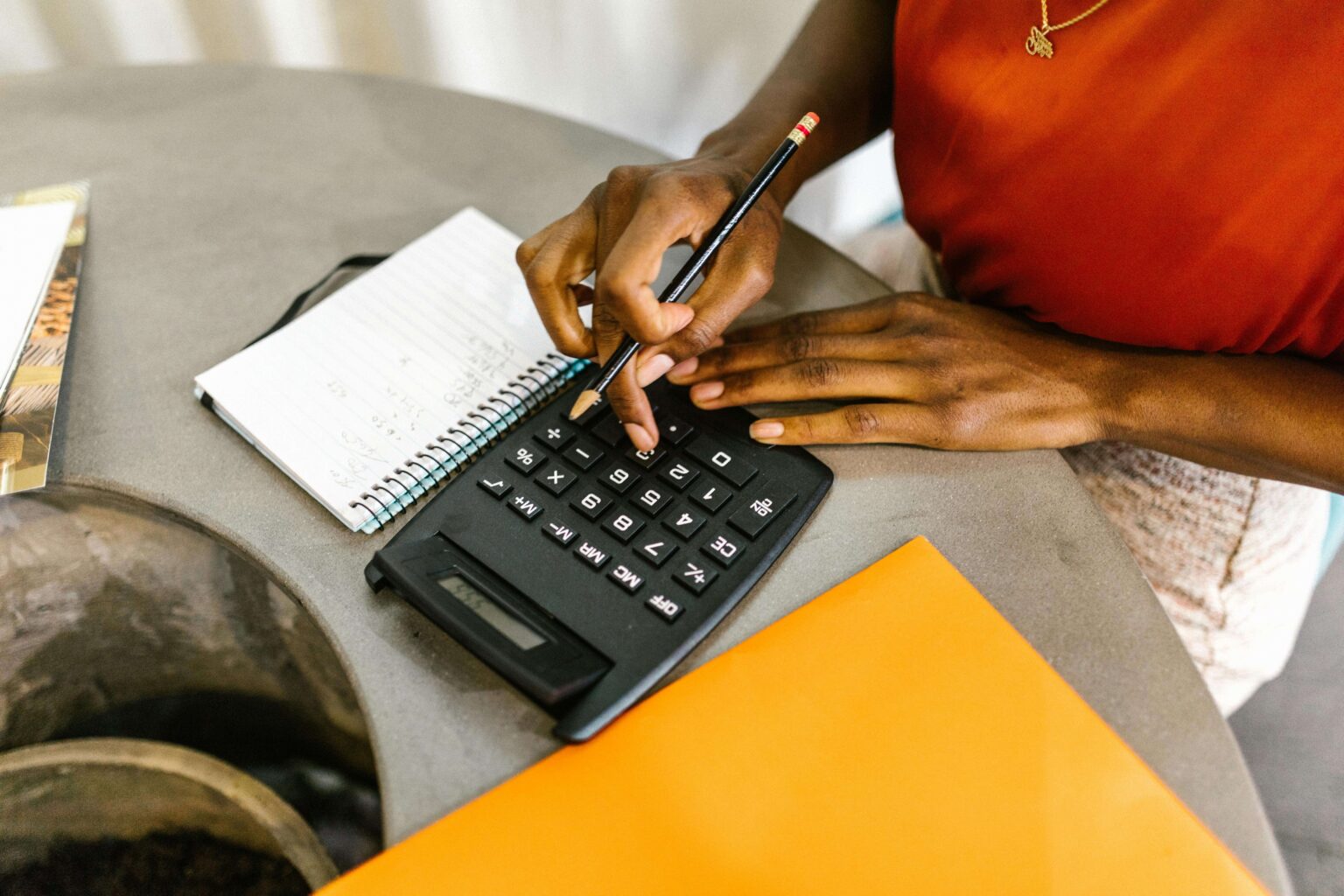Have you ever thought or felt you’re constantly running out of money, never have enough, or maybe even never know how much you have? I’ve been there and it’s stressful, frustrating, and can be embarrassing at times. That’s why I started budgeting.
Before diving in, remember that this is general information intended to offer ideas and inspiration. It’s always wise to consult with a financial professional for personalized advice.
What is a budget?
A budget is a tool anyone can use to make managing their money so much simpler and achieve more of their financial goals. You can use budgets to plan future spending, or track how money is used currently or in the past. There are so many ways to budget and so many reasons to use a budget.
I use a budget template to track how much money I’m making and spending and to plan my savings.
On your budget template, “how much money you make” is called “income” while “how much money you spend” is called “expenses”. “Savings” remains the same.
Who uses a budget and how they use budget templates
Budgets are used by any person or business who takes their finances seriously, wants to be clear on their financial status, and achieve positive outcomes.
Let’s look at an example:
Example 1
A mother knows she must purchase school uniforms for her 2 children each year. She also knows she must purchase items from a school supply list for both children.
Income
- She makes $3700 per month
Expenses
- All the school supplies for 2 children will cost $250
- The school uniforms for both children will cost $865
Mom likes to save up for this expense each year and this year the total amount she needs to spend for both children will be $1,115. She will save the money in a savings account so that it can earn some interest until she is ready to spend it.
Mom has only 5 months to save the full amount which means she will need to deposit $223 for 5 months into her savings account.
Financial Goal
- Mom’s main financial goal for back to school shopping is to save $1,115 in 5 months.
Let’s examine how this will look for the full 5 months on an actual budget template.
| Back to School Shopping | |||
| Month | Monthly Income | Total Deposited for School Expenses | Total Saved |
| March | $3700 | $223 | $223 |
| April | $3700 | $223 | $446 |
| May | $3700 | $223 | $669 |
| June | $3700 | $223 | $892 |
| July | $3700 | $223 | $1115 |
The table above shows the layout of a basic budgeting template. In our example, mom is using her budget template to track how much she has saved by the end of the 5 month period. That’s because her main financial goal in this scenario is to ensure she has at least $1,115 saved by July. As we can see, she has accomplished her goal.
Other common ways to budget
Another way to think of a “budget” is a predetermined amount to be spent on achieving some specific task.
When completing a project, some people and businesses will decide on a set amount they want to spend. In some cases, this amount is “fixed” meaning you can’t go over the amount, while in other cases it is “flexible” meaning if we need to spend more than the original agreed upon amount for certain approved reasons, that is fine.
Let’s look at an example:
Example 2
A homeowner wants to sell their home, but before they do they want to increase the perceived value of their home by making some improvements. They’ve decided to renovate the kitchen and 2 bathrooms.
They’ve decided to spend no more than $25,000 on the kitchen and no more than $15,000 for both bathrooms. This gives them a budget of $40,000 to work with for the entire project.
Financial Goal
- The homeowner’s main financial goal is to renovate their kitchen & bathroom without going over their $40,000 spending limit.
They use the budgeting template below to understand and track how much they need to spend and on what.
| Renovation Area | Task | Estimated Cost |
| Kitchen | New countertops (e.g., quartz) | $6000 |
| Cabinet refacing or replacement | $8000 | |
| New appliances | $5000 | |
| New flooring | $3000 | |
| Backsplash installation | $1500 | |
| New lighting fixtures | $1500 | |
| Total Cost | $25,000 | |
| Bathroom 1 | New vanity and sink | $2500 |
| Updated shower/tub re-tiling | $2500 | |
| New fixtures (faucets, shower) | $1500 | |
| New flooring | $1000 | |
| Fresh paint | $500 | |
| Total Bathroom 1 Cost | $7500 | |
| Bathroom 2 | New vanity and sink | $2500 |
| Updated shower/tub re-tiling | $2500 | |
| New fixtures (faucets, shower) | $1500 | |
| New flooring | $1000 | |
| Fresh paint | $500 | |
| Total Bathroom 2 Cost | $7500 | |
| Total Project Cost | $40,000 |
The budgeting template above shows an itemized breakdown of the work that will be done for each room, and an estimate for how much each task will cost to complete. They have chosen to use a budget to plan their future spending and they’ve ensured that the costs to complete each task does not exceed the $40,000 budget they’ve set for the entire project.
How you can make budgeting work for you
Set realistic financial goals
Everyone has financial goals they would like to accomplish. But to do so you must identify them, then create your plan for how you will achieve them.
Some common financial goals include:
- Save for an emergency fund: Set aside money for unexpected expenses, like car repairs or medical bills.
- Pay off debt: Focus on clearing credit card debt, student loans, or other loans.
- Save for retirement: Put money into a retirement account to ensure a comfortable future.
- Buy a home: Save for a down payment to purchase your own home.
- Plan for a vacation: Set aside funds for a special trip or vacation.
- Build a college fund: Save money for your children’s education.
- Investing for growth: Save money with investments like stocks, bonds, or mutual funds to grow wealth over time.
- Building wealth: Creating long-term wealth through a combination of saving, investing, and growing income streams.
To aid in reaching your goals, follow these steps:
- Be specific: Clearly define what you want to achieve.
- Set a timeline: Decide when you want to reach each goal.
- Create a budget: Plan how much money you need to save each month.
- Track your progress: Regularly check how you’re doing and adjust if needed.
Use budgeting tools
Once you’ve identified your goals, to simplify the budgeting process you can use budgeting tools and apps such as templates, spreadsheets, apps, and other software, to help you track or plan your income, expenses, and savings.
Some popular options include:
- You Need a Budget (YNAB): A paid app that encourages you to assign a job to every dollar and helps you stay on top of your budget.
- Spreadsheets: If you prefer a hands-on approach, a spreadsheet can be a great way to track your income and expenses.
Start small
Everyone needs to start from somewhere, so be sure not to get overwhelmed by trying to do something unnecessarily complicated, confuse yourself, and give up. Begin with a simple framework and gradually add more categories as you become comfortable with the process.
Review your budget regularly
Review your budget as often as you need to. To maximize success, consider reviewing your budget monthly and make adjustments as needed. Reviewing your budget regularly is what you will use to ensure it’s still working for you.
How to create a budget
Creating a budget depends on what you’re trying to accomplish (your goal). However, the basic steps for creating a budget based on specific goals include:
Scenario 1
- Save for an emergency fund
- How much do you want to have saved: Determine the amount you want to have saved just in case of the emergency need to save for the fund
- When do you need to have the amount saved by: Determine when the amount needs to be saved by
- Calculating your income: Determine your monthly income from all sources, including your salary, wages, and any other sources of income.
- Identify your different categories: Determine the different categories you will add to your budget template (egs. Income, expenses like – rent/mortgage, groceries, utilities, savings, etc.)
- Create a budget plan: Assign your income to different categories based on your expenses and financial goals.
- Review and adjust as needed: If you’re overspending in certain areas, make adjustments to your budget to bring it back in line. If you’re underspending in certain areas, you can speed up the savings process by depositing the unspent amount to your emergency fund.
Scenario 2
- Pay off debt
- Determine the debt amount: Identify the total amount you owe on the debt you want to pay off.
- Set a target repayment period: Decide how quickly you want to pay off the debt. This could be a specific timeframe (e.g., 12 months) or a monthly payment amount.
- Calculate your monthly payment: Divide the total debt amount by the desired repayment period to determine the monthly payment needed.
- Adjust your budget: Allocate a portion of your income to debt repayment. You may need to cut back on other expenses to free up funds for debt repayment.
- Create a debt repayment plan: Consider using the debt snowball or debt avalanche method to prioritize which debts to pay off first.
- Track your progress: Regularly review your progress and make adjustments to your budget as needed.
Adjust spending habits
Be sure to make adjustments as needed. Look for areas where you can cut back on non-essential spending to free up money for your financial goals. For example, if you’re eating out several times a week, try cooking at home more often. Small changes in your spending habits can add up over time, helping you achieve your goals so much faster.
Tips for sticking to your budget
Sometimes sticking to a budget can be challenging, but with the right mindset and strategies, it’s entirely possible. Below are some tips to help you stay on track:
- Be realistic: Don’t set overly restrictive limits. A budget should be a reflection of the lifestyle you want to live, not a punishment.
- As mentioned above, review regularly: Check your budget regularly to ensure you’re staying on track. Adjust as needed to accommodate changes in income or expenses.
- Always celebrate small wins: Achieving your financial goals, even in small steps, is something to celebrate. You will stay motivated to stick with your budget.
Budgeting is not only a fantastic habit to develop, but a great tool to use in various areas of your life.
As a woman, you have the power to shape your financial future. By taking control of your finances through budgeting, you can achieve your goals, reduce stress, and build a stronger financial foundation. Remember, you are capable of managing your money effectively and achieving financial independence.
In all that you do, love yourself!
Remember, in all that you do we wish you the best, however, we are not licensed financial advisors, accountants, or lawyers. Know that all financial activities including investments carry the risk of loss. All shared content is for informational or entertainment purposes only and therefore does not constitute financial advice. Learn more in our disclaimer policy.












